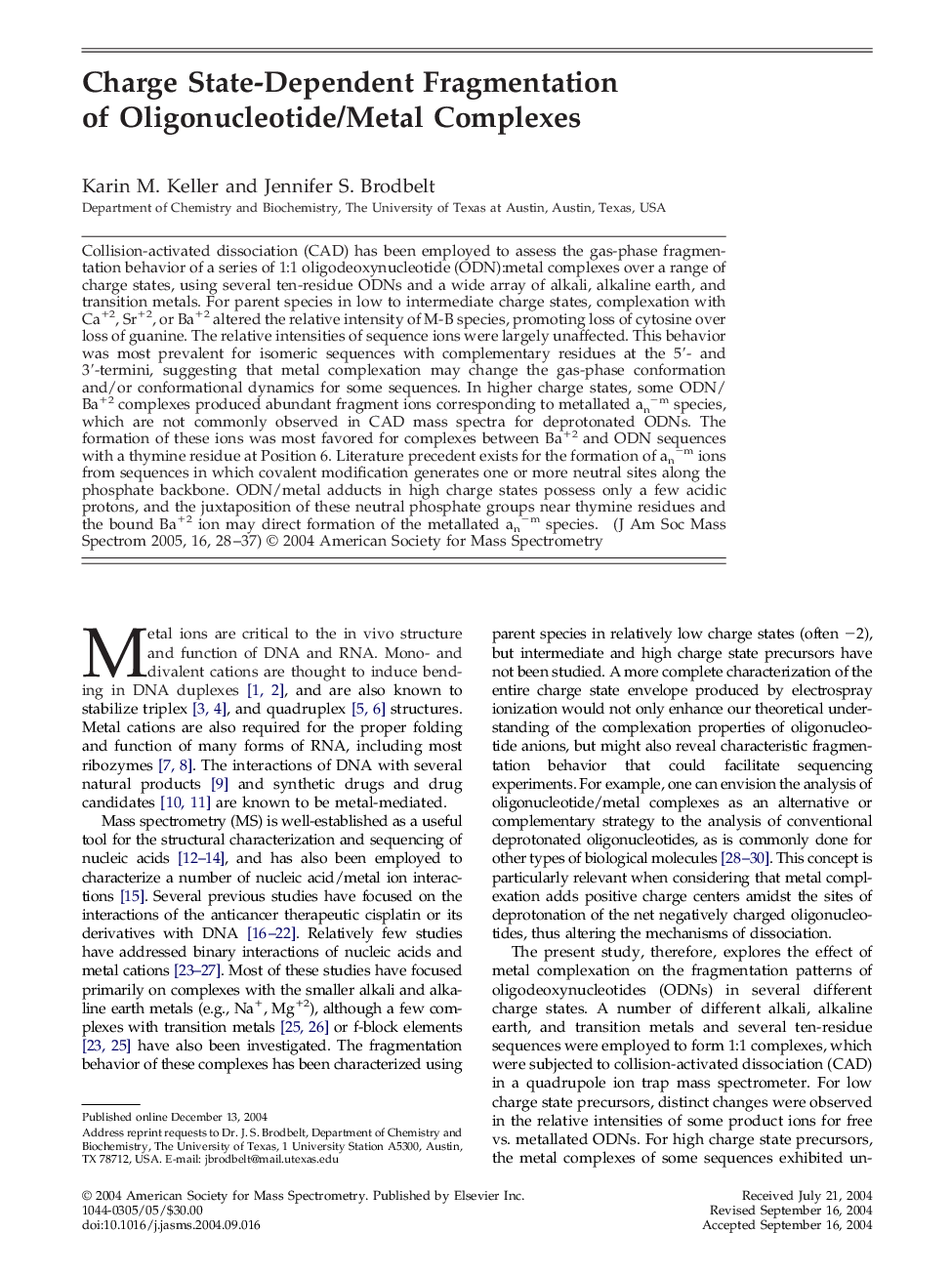| Article ID | Journal | Published Year | Pages | File Type |
|---|---|---|---|---|
| 10546860 | Journal of the American Society for Mass Spectrometry | 2005 | 10 Pages |
Abstract
Collision-activated dissociation (CAD) has been employed to assess the gas-phase fragmentation behavior of a series of 1:1 oligodeoxynucleotide (ODN):metal complexes over a range of charge states, using several ten-residue ODNs and a wide array of alkali, alkaline earth, and transition metals. For parent species in low to intermediate charge states, complexation with Ca+2, Sr+2, or Ba+2 altered the relative intensity of M-B species, promoting loss of cytosine over loss of guanine. The relative intensities of sequence ions were largely unaffected. This behavior was most prevalent for isomeric sequences with complementary residues at the 5â²- and 3â²-termini, suggesting that metal complexation may change the gas-phase conformation and/or conformational dynamics for some sequences. In higher charge states, some ODN/Ba+2 complexes produced abundant fragment ions corresponding to metallated anâm species, which are not commonly observed in CAD mass spectra for deprotonated ODNs. The formation of these ions was most favored for complexes between Ba+2 and ODN sequences with a thymine residue at Position 6. Literature precedent exists for the formation of anâm ions from sequences in which covalent modification generates one or more neutral sites along the phosphate backbone. ODN/metal adducts in high charge states possess only a few acidic protons, and the juxtaposition of these neutral phosphate groups near thymine residues and the bound Ba+2 ion may direct formation of the metallated anâm species.
Related Topics
Physical Sciences and Engineering
Chemistry
Analytical Chemistry
Authors
Karin M. Keller, Jennifer S. Brodbelt,
